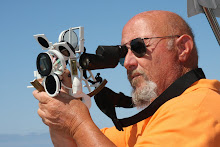

Three things caused me to do this modification...1. I was tired of stubbing my toes on the windlass, 2. I was tired of the lazy sheet getting caught on the windlass when I unfurled the genoa, 3. The last straw was when the windlass would leak if we took water over the bow, causing a flood in the V berth. I repaired the leaks in the windlass with a kit from Maxwell, but figure that it will only be a matter of time before the O rings go bad again and I'll have another mess to clean up. This cover has been replaced with an inverted stainless bowl. It looks much nicer and more nautical. It still accomplishes all of the above goals.
































